We focus on some of the innovative digital effects of three of the season’s early blockbusters.
Men In Black III (Sony)
VFX Supervisor: Ken Ralston
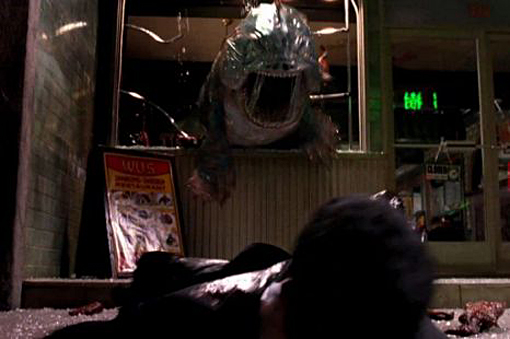
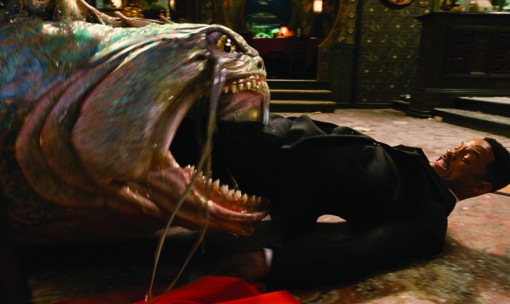
It’s been 10 years since Agents J and K last graced the big screen to police the alien population living among us—not so long by most standards, but long enough for there to be major changes in Sony Imageworks’ visual effects work for Men in Black III.
VFX supervisor Ken Ralston is taking his second turn on the franchise, having supervised vfx on 2002’s Men in Black II, and he agreed to return based on the variety of effects work and the chance to work again with director Barry Sonnenfeld.
“It was a combination of [Barry’s] approach to movies and how he composes shots, and trying to make it real enough and cool enough—our mantra was fun enough—that it would work within the confines of what a Men in Black movie has to be,” Ralston says.
Fellow vfx supervisor Jay Redd says the biggest changes in technology since MiB II involve lighting.
“On every setup … we were capturing high-dynamic-range, 360-degree images using the Spheron capture system, and then our own proprietary software to unwrap these images and take advantage of the dynamic range of the light on the set as a really great starting point,” he says. “We can drop in our animation or our models into a live-action plate and have it look integrated quite quickly.”
The film begins with a history-altering event that prompts Agent J (Will Smith) to go back in time to 1969 and work with the younger version of Agent K (played in the present by Tommy Lee Jones and in the past by Josh Brolin) to counter an alien threat. The scenario presented some interesting effects challenges, including a sequence of Smith falling through time, a monocycle chase through 1969 Queens, and creating digital versions of the now-gone Shea Stadium and the moon-launch base at Cape Canaveral.
But aliens and the comedy are the calling cards of the series, and both required animation supervisor Spencer Cook and his team to step up.
“Barry and I had some conversations about how he directs his actors and how he tells them not to try to be funny,” says Cook. “His direction is the same for animators.”
One example is a scene involving alien worms playing “Amazing Grace” on the bagpipes at a funeral. After several cartoony attempts, Sonnenfeld asked Cook and his crew to tone it down.
“It makes it funnier because it makes these worm guys feel like they’re taking their job seriously,” says Cook.
One of the most fun sequences involved Smith wrestling with a giant alien fish character in a Chinese restaurant. Basing its movements on creatures like a walrus, the design came together in a practical manner through the process of rigging and posing the character. Getting it to look like it could support its weight with fins was one challenge; another was getting its mouth just right for a key moment in the sequence in which it tries to swallow Agent J. Cook says he found the answer while watching a nature special on TV featuring the prehistoric Dunkleosteus, and incorporated its massive jaw into the alien fish.
Other key sequences involved animators using motion capture of themselves to create the background crowd at Shea Stadium, and using a stunt simulation tool called Endorphin to animate alien guards being sucked out into space.
For the crew, working on Men in Black III was a nice break from the more serious vfx films.
“I always find it much more fun to work on a film with a sense of humor,” Ralston says.
The Avengers (Disney/Marvel)
VFX Supervisor: Marc Chu
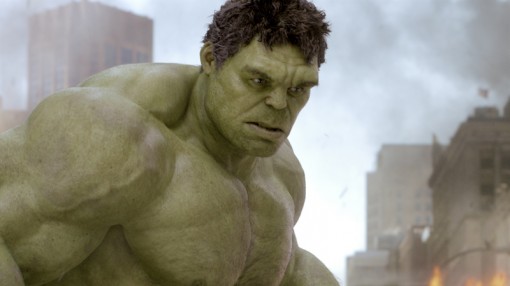
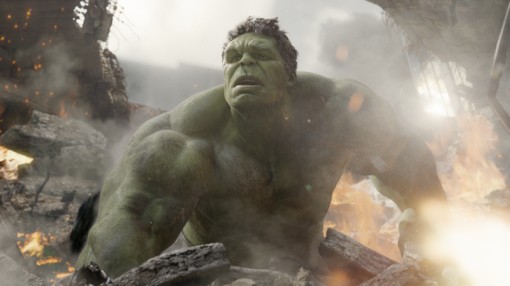
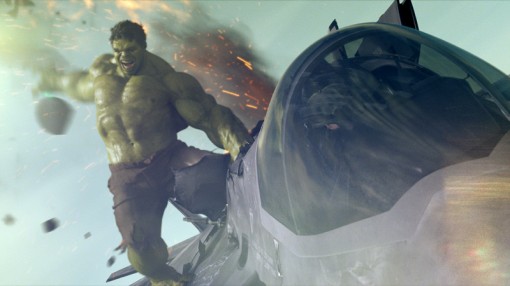
It looks like third time’s the charm for the Hulk. The green goliath stands out as the visual effects triumph of Marvel’s Avengers—itself a massive critical and commercial victory for Disney and the visual effects crews that brought the comic-book epic to life.
Work on the Hulk began even before Industrial Light & Magic had been awarded the show, with director Joss Whedon and actor Mark Ruffalo visiting the studio and seeing what the studio could do with its technology, says ILM animation supervisor Marc Chu. A mo-cap session allowed Ruffalo to see himself as the Hulk and changed how he presented the character and pushed it toward the more gorilla-like movements seen in the final film.
When work began in earnest, ILM made it a priority to constantly connect the Hulk to Ruffalo as much as possible in every shot, and in the most minute details down to the pores in the actor’s skin. In reviewing the previous Hulk films—ILM worked on the first, Ang Lee-directed Hulk but not 2008‘s The Incredible Hulk—Chu says Whedon preferred a scaled-down version of the character.
“It was all about keeping the character a little more grounded to reality so we could buy into the Hulk a little bit better,” says Chu.
Tons of reference material was collected, including detailed photographs and recordings of Ruffalo. The actor did performances in the motion-capture suit and Chu says he also had his animators occasionally don the rig and generate their own movements to augment with key frame techniques where needed.
“What that does is it gives the animators a feeling of ownership over the material, so they’re not just feeling like they’re getting raw data that they have to process,” he says.
With Iron Man, ILM picked up where it left off with the Mark VI suit from Iron Man 2 and moved him into the Mark VII suit. Chu says the new suit gave the character more ways to fly, including a backpack for propulsion that freed up the character’s hands for battle and more iconic comic-book poses.
The Chitauri alien invaders were another big animation task, appearing in about 230 shots in the film, Chu says. Exploring how the aliens should move to look menacing fell to the animation team.
“It took us a while to get there, just to make it feel like they were strong and threatening enough to pose a threat,” says Chu. “That’s where I think it’s important to have an animator on the show.”
Environment work was extensive, with ILM having to recreate large portions of New York City, as well as Stark Tower and the massive S.H.I.E.L.D. Helicarrier—an asset that needed to be shared with other vfx studios, says ILM vfx supervisor Jeff White.
Despite a very tight schedule, the process was made easier, White says, by a very cohesive previz put together by The Third Floor under the direction of overall vfx supervisor Janek Sirrs.
The digital version of New York was created with a series of 360-degree, ultra-high-res panospheres shot in the city from ground level, from a 120-foot lift and from rooftops. That footage was re-projected onto geography created from scans of the buildings as a starting point for the animation and lighting.
The Helicarrier ended up being a highly detailed model for which ILM studied the textures and lighting on real aircraft carriers.
The film was a huge undertaking, with a lot of collaboration required with other effects studios, such as Weta, Hydraulx, Digital Domain, Cantina Creative, Luma Pictures, Evil Eye Pictures and Trixter.
Snow White and the Huntsman (Universal)
VFX Supervisors: Cedric Nicolas-Troyan, Phil Brennan
VFX Supe for The Mill: Nicolas Hernandez
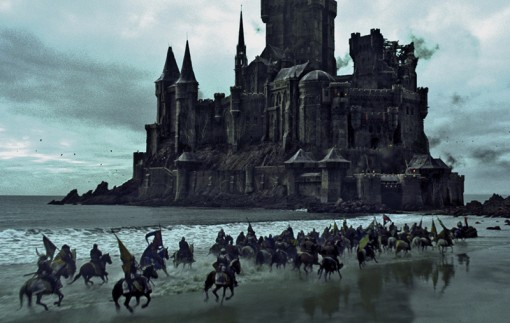
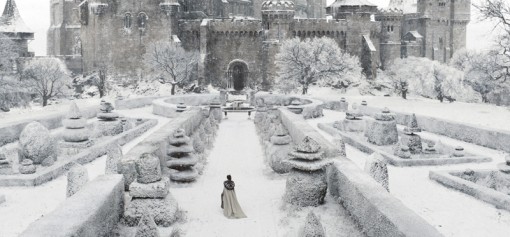
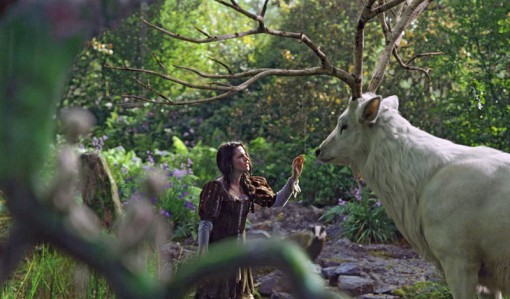
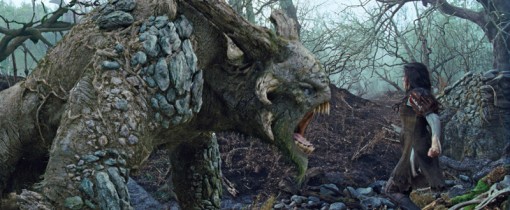
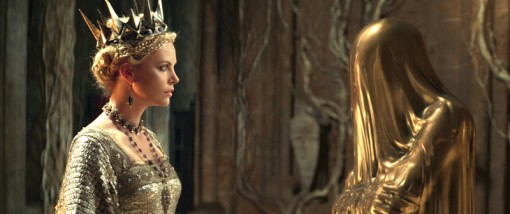
One of the pivotal scenes in the familiar Snow White fairy tale is the one in which the Queen asks her magic mirror to identify the most beautiful woman in the world. To realize this sequence in Snow White and the Huntsman, vfx supe Cedric Nicolas-Troyan went to Nicolas Hernandez and his team at boutique vfx shop The Mill. It took Hernandez and his crew about 11 months to deliver a total of 40 shots for the “Mirror Man” as well as various plate replacement jobs.
“Our goal was to create a new type of fluid material that was a cross between cloth and liquid, that melts and flows out of the mirror and eventually travels towards the camera,” says Hernandez, a veteran vfx professional who has worked on both features such as Chronicles of Narnia: The Voyage of the Dawn Treader and TV projects such as Dr. Who, Merlin and Neverland. “Once this shape comes out of the mirror, it takes the form of a man with no facial features. Then, it carries on a conversation with Charlize Theron’s Queen character.”
To create this difficult sequence, the team spent six months of research and development to design the formation of the Mirror Man. They began the process by using a live-action physical element show, throwing buckets of paint on dummies at 1,000 frames per second to measure the effects in the real world. Eventually, they came up with a Maya-based cloth simulation that was effective in conveying the desired watery look. Then, they employed Houdini for the post-sim stage to relax the topology mesh and create the desired fluid effects.
“What was interesting about the job was that they weren’t looking for a standard morphing scene, something that we had seen in Terminator 2,” says Hernandez. “They wanted it to be more fresh, so that you could still notice the fabric’s behavior in the final effect. That’s why we had to use two completely different pipelines. The sequence also has a lot of multiple close-ups, so the CG has to be really strong and there’s no room for cheating. We knew a high level of polish was going to be needed as well as subtle, experimental and detailed animation for his performance. The animation drove the simulations on top of him so there was a lot of trial and error.”
Hernandez says the film’s vfx supervisor has a lot of experience in visually striking commercials. That’s why his eye for detail and subtle visual panache has really helped push the film’s unique style.
“You don’t have a lot of typical in-your-face shots in this move. I think audiences will be pleasantly surprised by the creative designs and the inventive approach to what can happen in the dark forest.”
[In addition to The Mill, Rhythm & Hues, Hydraulx, Double Negative, Lola, Pixomondo and BlueBolt also provided vfx shots for the movie.]



